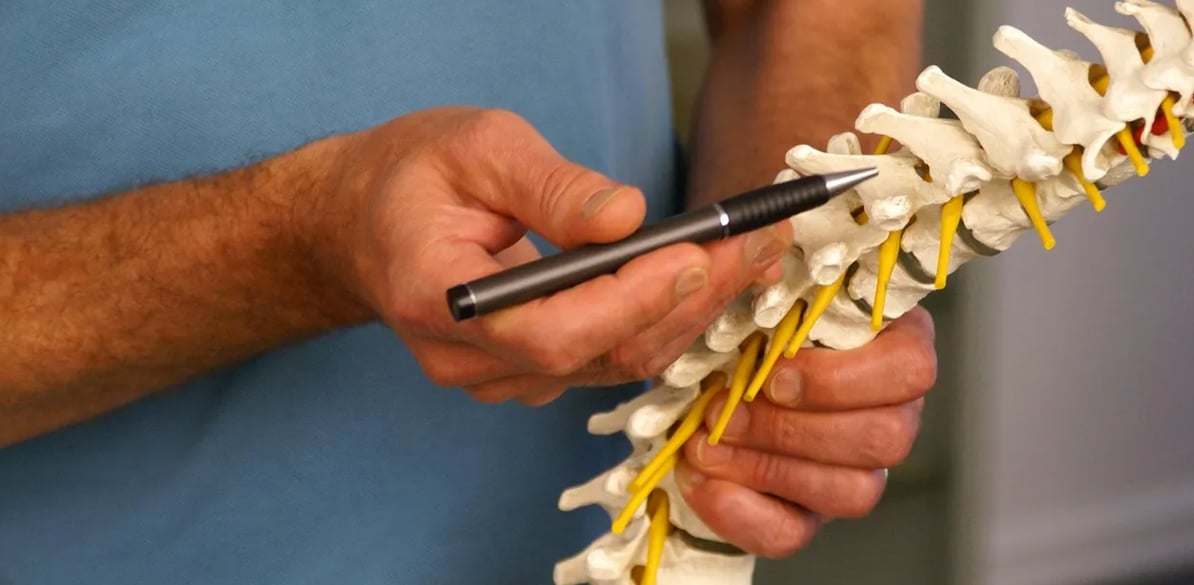Bone disorders of development, ankylosing spondilytis, diseases from joint deposit, amyloidosis, polymyositis and impact in driving

Bone development disorders
- Achondroplasia is a type of dwarfism where tubular bones of the limbs are very short and bended and the length of the trunk is normal, as well as intelligence.
- Dyschondroplasia affects the edges of tubular bone diaphysis, so shortening is obvious, with deformities and secondary arthritis, and permanent sequels.
- Multiple enchondroma affects tubular bones of the hands and feet, with frequent pathological fractures that require bone grafting.
- Metaphyseal aclasia affects the distal edges of the femur, radio and ulna, and proximal edges of the tibia, fibula and humerus with formation of multiple exostosis.Height can be short and even reach dwarfism, and there can be disability from nerve compression or interference with joint movement.
- Polyostotic fibrous dysplasia causes in the tubular bones deformities and curvatures with possibility of pathological fractures and poor consolidation.
- Osteogenesis imperfecta, in patients reaching adult life, is characterized by stop of growth, fractures with non-significant injuries and deafness, that cause a real disability.
- Osteopetrosis is rare, with progressive sclerosis of the long bones that reduces the bone marrow, and thickening of the skull that compresses cranial nerves and causes blindness, nystagmus, eye palsy, etc.
- Melorheostosis is characterized by sclerosis changes limited to a single extremity, that causes pain which is frequently severe and limitation of joint mobility in the bone affected.
Tips
- In all cases where dwarfism is significant, with a height below 1.45 meters , driving is not permitted.
- Bone deformities and functional and joint limitations lead the specialist to inform if the patient is able to drive.
- Each patient will be assessed in his capacities individually as laid down in the law.
- In the necessary cases, the car should be adapted to the driver’s needs, always ensuring the safe driving, without increasing the risks.
Ankylosing spondilytis
It is a chronic, progressive disease that affects the spinal, sacroiliac, hips, shoulder and sometimes, peripheral joints.
The primary clinical condition is associated with pain and back rigidity, and sometimes pain in the hips.
Chest pain, anemia, fatigue, fever, acute anterior uveitis (20%), heart diseases, pulmonary and digestive disorders are frequent.
The cauda equina syndrome, when present, is associated with buttock pain, leg weakness and loss of sphincter control.
There is hyperesthesia of the affected joints, reduced chest expansion and reduced anterior flexion of the lumbar spine.
Tips
- It is a clinical condition that, for the significant deformity and rigidity involved, is disabling for driving in advanced cases.
- The added complications prevent driving until symptoms subside, as evaluated by the physician, who report about it to the patient.
Diseases from joint deposit
- Gout from deposit of monosodium urate crystals causes acute arthritis usually affecting a single joint, though it may be polyarticular and be associated with fever
In 90% of the patients podagra or gout in the toe, that can be the site of the first attack in half of the cases.
The crisis usually disappears spontaneously in days or weeks, though antiinflammatory drugs are frequently indicated. During the intercritical period the patient is asymptomatic. - Pseudogout is an arthropathy from deposit of calcium pyrophosphate, more frequent in elderly patients, and frequently affecting the knee and large joints.
The affected joint is erythematous, swollen, hot, and painful, and half of the patients progress to the chronic form with progressive degenerative disorders, in addition to acute intermittent attacks. - Arthropathy from hydroxyapatita deposit is clinically similar to the above, but it affects more often the knee and the shoulder.
Tips
- Diseases from joint deposit:
- Acute episodes are completely disabling for driving, due to the impossibility of moving the joint affected by pain.
- An adequate medical therapy and joint rest will lead to the absence of symptoms and permit driving.
- Pseudogout:
- Old drivers are more commonly seen today and this condition is associated with aging, so physicians should be alert for it to provide the appropriate advice.
- The diagnosis must be confirmed, advising them against driving if their movement is limited in acute episodes.
- Advanced degenerative joint disorders, particularly of the knees, prevents them to be fast when changing the pedals from the brake to the accelerator, and with the clutch in the frequent changes of gear.
- Arthropathy: In acute crises, it requires joint rest and the patient cannot drive.
Amyloidosis
The symptoms and outcome are very different, depending on the organ affected by the amyloid deposit.
Tips
- Driving can be limited by arthritis, neuropathy, heart disease, respiratory obstruction, etc.
- The physician can act differently with each patient, notifying the risks of driving, depending on the clinical case.
- Nevertheless, there is a high number of patients with non-differential spondyloarthropathy, who are in the initial phase of their disease and have not developed any specific disease yet.
- It is advisable to treat them in the first year of disease progression, due to the benefits obtained by an early treatment, since the subsequent functional limitations that will hinder driving will decrease.
Polymyositis
The characteristic symptoms of polymyositis are proximal muscle weakness, with difficulty to climb stairs, raise the arms, rise from low seats. The posterior muscles of the neck are frequently affected.
Tips
- The symptoms of polymyositis hinder arm movements in maneuvers, and the physician should warn the patient about it so that he can plan his movements, and uses the easiest ones.
- When the neck is affected, it is difficult to keep the head raised while driving and also to turn adequately the head as required by traffic needs.
- In these patients treatment is slow and difficult, and they must be warned of the risk run when an unforeseen event arises and they must act fast.
- In some advanced cases driving should be advised against.
